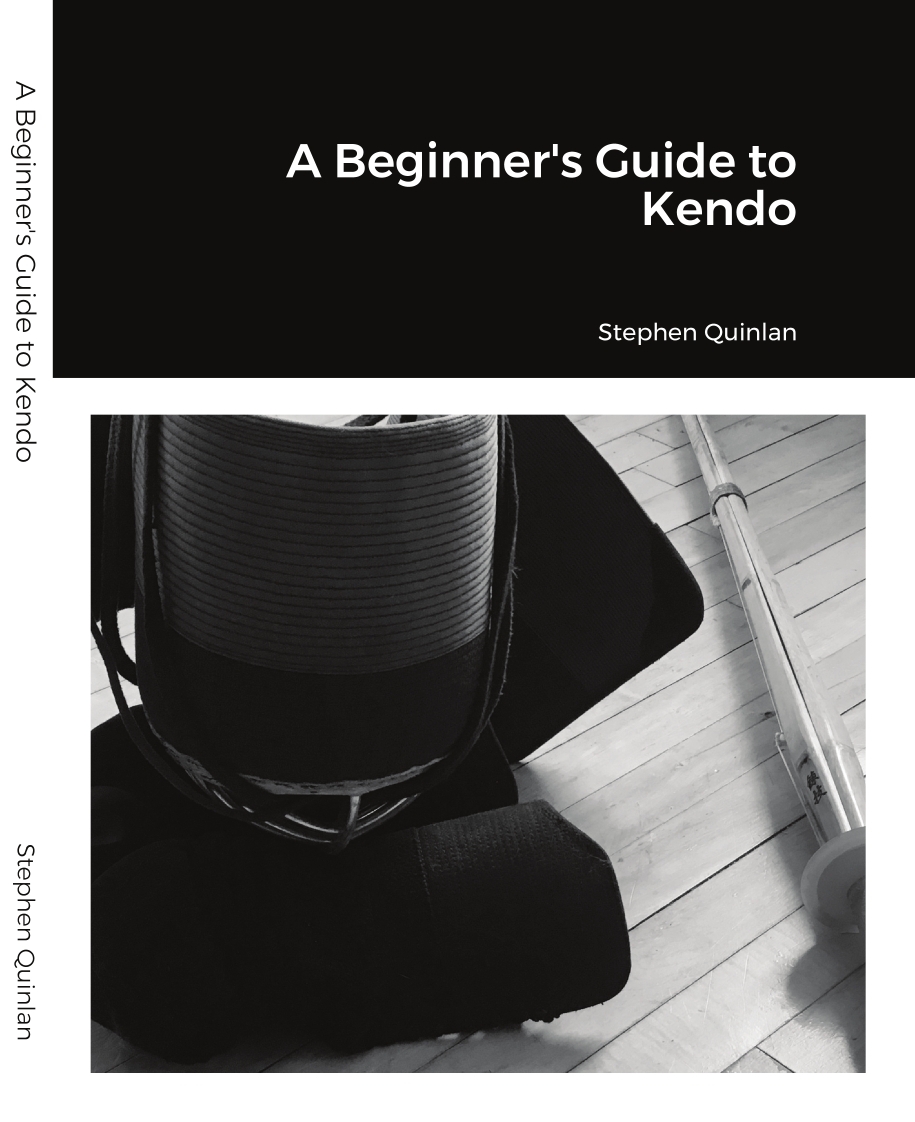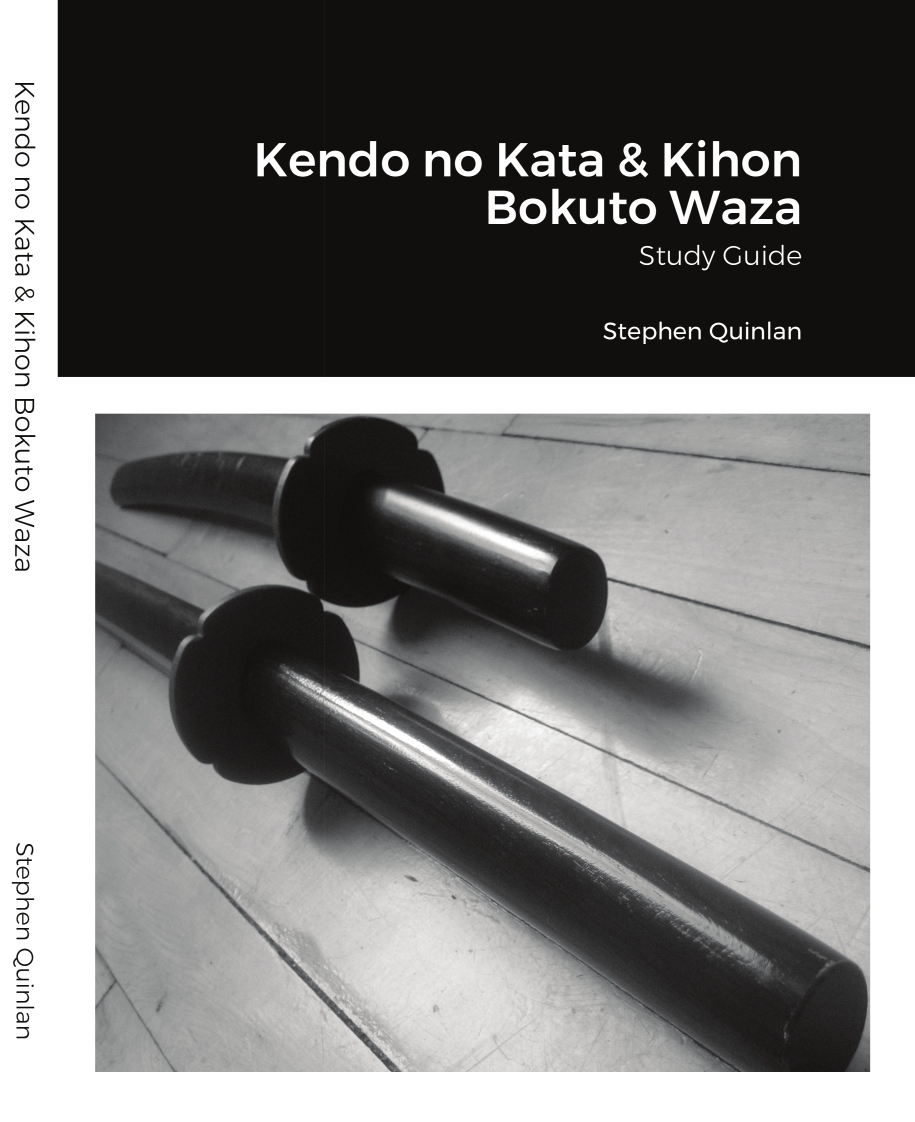Kendo Information
Table of Contents
Kendo Terminology
Glossary
KKC Dojo Manuals
A Beginner's Guide to Kendo

This guide gives inforamtion on formalities, kendo basics, equipment and maintenance, as well as the general layout of a practice and the drills or exercises done. It also covers some advanced topics such as waza, kendo theory, and competitions. Download
Order a bound copy
If preferred, bound copies may be ordered online. The listed cost is for the colour printing and binding fee, plus shipping.
Order a bound copyNihon Kendo Kata & Kihon Bokuto Waza: Study Guide

The kata form an integral part of kendo by teaching both form and theory. This guide gives descriptions of the kata as well as information on the theory behind them. It also contains descriptions and information on the kihon bokuto waza. Download
Order a bound copy
If preferred, bound copies may be ordered online. The listed cost is for the colour printing and binding fee, plus shipping.
Order a bound copyFundamentals
Suburi
Here is a very short movie clip displaying three different ways you can 'time' your suburi, specifically with regards to the timing of your shinai in relation to your feet. The three different versions are a rough benchmark for techniques to be used at beginner, intermediate, and advanced level kendo. The "advanced" timing is the one we must strive for in our keiko, but it is also to be used during the kata and the kihon bokuto waza.
View suburi video
Concepts and Theory
Concept and Purpose of Kendo
What is the Purpose of Kendo? This is an interesting question as modern kendo is both a "sport" as well as a "budo". While the sport aspect is easy to understand (exercise, camaraderie, competition, etc..) the "do" in kendo is much more complex. The All Japan Kendo Federation (AJKF) officially set down the "concept and purpose" of kendo in 1975. This definition embodies the modern concept of a "do"
TopThe Mindset of Kendo Instruction
This is a supplement to the AJKF's "concept and purpose of kendo". Where as the "concept" is directed toward the student or general populace, the "mindset" is directed toward instructors to help guide them during dojo practice and instruction. The "concept" and the "mindset" together form the core ideals of modern kendo. The All Japan Kendo Federation officially set down the "mindset of kendo instruction" in 2007.
TopNotes on Jodan no Kamae
Mistakes in Practice
This is a small excerpt from "Zen Mind, Beginner's Mind" by Shunryu Suzuki. The connection between 'zen thought' and kendo is very apparent, as are the similarities in their practice methods. While the subject of the book is that of practicing 'zazen', the advice it gives is equally applicable to a kendoka in their practice.
TopKendo no Kata & Their Effects on Kendo
Applying Kendo no Kata to Shinai Kendo
Mitsu no Sen, Kendo Kata, and Striking in Kendo
The mitsu no sen are central ideas behind shidachi's attacks in the kata and are directly applicable to shinai kendo. This small article is from a presentation on how various levels of kendoka go about striking in shinai kendo, leading up to using the mitsu no sen at higher levels, and how shidachi goes about striking uchidachi in the kendo kata.
TopKendo Grading
The Ranking System and Progression
Kendo, like other Japanese martial arts, uses a Dan based grading system popularly recognized as "belt rankings". However in Kendo no explicit indication of rank is worn.
Kendo ranks are broken into two main groups: kyu rankings, also known as "mudansha", and dan raknings or "yudansha". Dan ranks are more commonly known, from other martial arts, as "black belt" ranks. This equates 1st kyu with "brown belt" and 1st dan with "first degree black belt".
View rank progression chart
| Rank Progression in Kendo | |
|---|---|
| Unranked | New students and beginners |
| Kyu Ranks | |
| 6th Kyu | |
| 5th Kyu | |
| 4th Kyu | Bogu practice begins. Roughly 4-8 months practice time |
| 3rd Kyu | |
| 2nd Kyu | |
| 1st Kyu | Roughly one year of practice time (minimum) |
| Dan Ranks | |
| 1st Dan | Beginner phase of Kendo |
| 2nd Dan | |
| 3rd Dan | |
| 4th Dan | Intermediate phase of Kendo |
| 5th Dan | Sensei. Roughly fifteen years of practice (minimum) |
| 6th Dan | |
| 7th Dan | Advanced phase of Kendo |
| 8th Dan | |
Rank Requirements
In Canada, kyu rankings begin at 6th kyu and advance to 1st kyu, however younger children may start at 10th kyu. Dan raknings begin at 1st dan and advance to 8th dan.
The final rank, 8th dan, is considered one of the most difficult exams in the world having approxiamtely a 0.3% - 0.5% pass rate!
View rank requirements chart
| CKF Rank Practice Time and Age Requirements | ||
|---|---|---|
| Rank | Min. Practice Period | Min. Age |
| 1 Kyu | N/A | N/A |
| 1 (Sho) dan | Three months after granting of 1 kyu | 14+ |
| 2 (Ni) dan | One year after granting 1 dan | 16+ |
| 3 (San) dan | Two years after granting 2 dan | 18+ |
| 4 (Yon) dan | Three years after granting 3 dan | 21+ |
| 5 (Go) dan | Four years after granting 4 dan | 25+ |
| 6 (Roku) dan | Five years after granting 5 dan | 30+ |
| 7 (Nana) dan | Six years after granting 6 dan | 36+ |
| 8 (Hachi) dan | Ten years after granting 7 dan | 48+ |
| Practical Examination (Fencing) | ||
| 1 Kyu - 7 Dan | Two, two minute fencing matches with an opponent challenging for the same rank, and within the same age group | |
| 8 Dan | The CKF must be contacted regarding challenges for 8 dan | |
| Kendo Kata and Bokuto Waza Examination Requirements | ||
| 1 Kyu | Bokuto waza 1-9 | |
| 1 Dan | Tachi kata 1-3 | |
| 2 Dan | Tachi kata 1-5 | |
| 3 Dan | Tachi kata 1-7 | |
| 4 Dan+ | Tachi kata 1-7 and kodachi kata 1-3 | |
| Written Examination Requirements | ||
| A written exam is required to be submitted to the CKF for all dan rank challenges from 1 dan through to 5 dan | ||
Grading Manual
The following is a small booklet on pointers and expectations for Kendo gradings. The book is translated by Will Blades, a member of my "Alma Mater", the Halifax Kendo Club. The booklet gives information on what is required for the ranks of 1st kyu up to 5th dan.
This booklet is for educational purposes only, and is copyright by the respective author and/or publisher.
Top